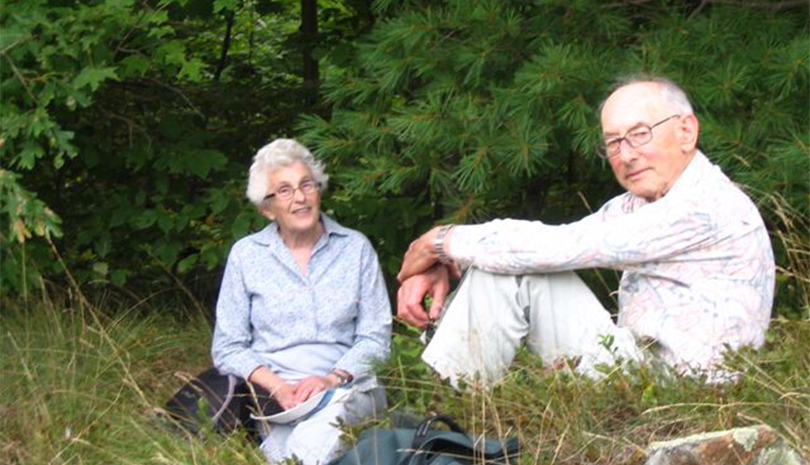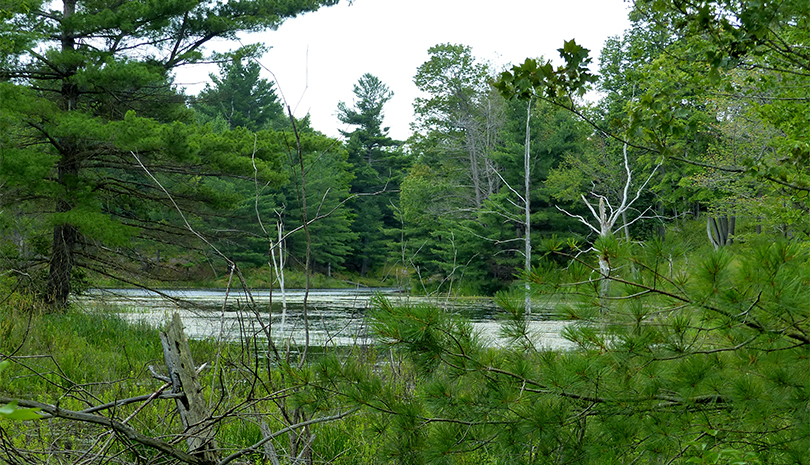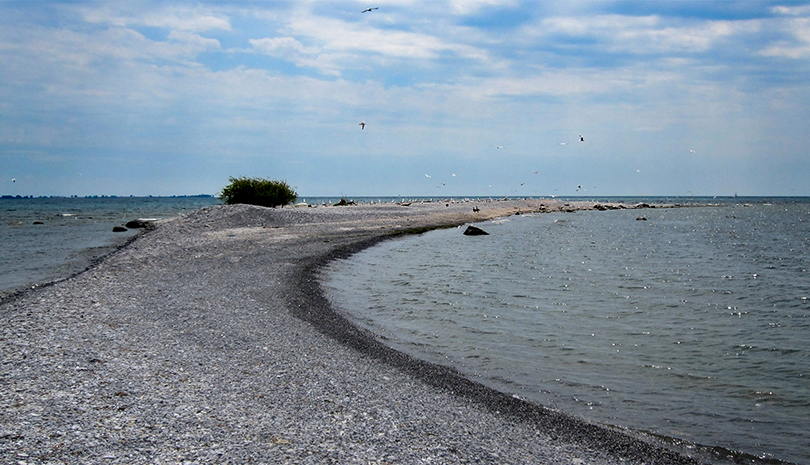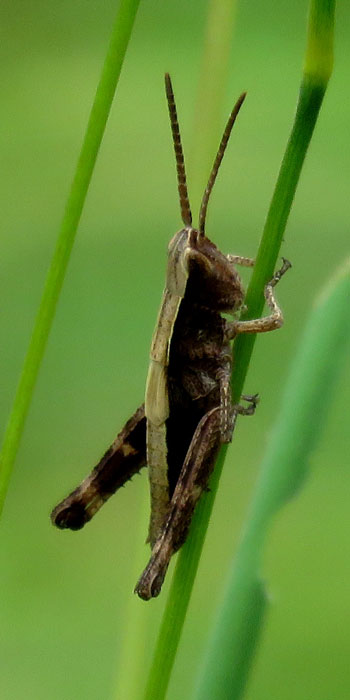
For Landowners
Landowners often ask us “how can we protect the land we love in the future?” They want the wild lands that they have enjoyed over the years to continue to be a place for nature. They want to be reassured that their land will not be clearcut or subdivided for cottages, and that the animals and plants that have given them so much pleasure will continue to thrive on the land for generations to come.

Reflections on our property donation by Keith Somerville
One could say that appreciation for the land and its waterways is in my blood. I’m from a Kingstonian family who all enjoyed the great outdoors. My earliest memories are of accompanying my relatives as they worked with the land—both living off it, and enjoying the many recreational opportunities it provided. By the age of five, I was hooked on fishing and it became one of my favourite activities. At the age of ten, I started exploring the land with my dad.
From my family, I learned how to respect nature and harvest food—taking only what was needed and could be used. I learned important survival skills that I used when I was off hunting or fishing for many hours. But my appreciation for the land extends beyond what I could harvest from it. I took great joy in sitting quietly in the woods or on the water, enjoying the sights and smells, watching the wildlife that surrounded me. I loved being on the water and became an avid four-seasons fishermaen.
The Somerville Nature Reserve—or TerreOak, as we called it—took almost ten years to find. Several years into my search, my wife Betty told me that what I wanted didn’t exist. But in TerreOak, I found everything I had dreamed of. I wanted (and got) a beautiful piece of land with:
- rolling terrain and rocky outcrops
- ponds and lakes filled with life
- a private and quiet location
- mature woods replete with signs of wildlife, such as scat and buck rubs
- an absence of structures.
My dream was to build a small cabin there that I could share with family and friends. I saw us sitting around a fire, enjoying nature and each other’s company while unplugged from modern conveniences. Unfortunately, I could not proceed with my dream due to the interference of a progressive disease. One of my favourite quotes is “We cannot direct the winds, but we can adjust our sails.” With the donation of this land, I am adjusting my sails. My new dream is to see TerreOak, now the Somerville Nature Reserve, protected in perpetuity.
Thank you to the Land Conservancy for Kingston, Frontenac, Lennox & Addington for helping me to realize my new dream. Thank you to my wife Betty for her continued support, and to my niece Nancy for helping to arrange the donation.
Thank you to all of our Generous Land Donors
Land Conservancy for KFLA has been lucky to have benefited from the generosity of nature loving property owners. Of the 12 properties currently held by the land conservancy 10 were donated and 2 are easement properties. Below is an example of four donated properties.
Meyer Woods
Our first property, was the generous donation of Henry and Marion Meyer. This 75 hectare (186 acre) lakefront property is home to several species at risk including:


Arthur Nature Reserve
A 16-hectare (40-acre) lakefront property, was kindly given to the Land Conservancy by Dr. Diane Arthur. It is protecting nine species at risk, including the Eastern Black Ratsnake. It qualified as an EcoGift.
Lee Nature Reserve
A 12.5 hectare (31 acre) triangle of land on the west side of the Salmon River adjacent to the Mellon Lake Conservation Reserve. It has 914 metres of shoreline. The land is characterized by granite cliffs rising in successive ridges away from the river, and features several habitats, including rocky barren outcrops, deciduous woods, and riverine wetland. The property is home to Five-lined Skink, a species of special concern. The Lee Nature Reserve was the gift of Steven Lee, and qualified as an EcoGift.


Salmon and Snake Islands
Located about one kilometre off Kingston’s shoreline. The islands are small rocky outcrops that have been the subject of Canadian Wildlife Services research for almost 40 years. They were the gift of Dr. James Day and Robert Carson, and qualified as EcoGift. The Toronto Star profiled the islands as home for Ring-billed and Herring Gulls in this 2011 report.
Donating Your Property – Details
Sign a conservation easement agreement with the Land Conservancy. Under this agreement, restrictions are placed on the property and registered on the title to the property in the Land Registry Office. These restrictions may, for example, prohibit logging activities, changes to the shoreline, new construction on any undeveloped part of the property, subdividing the property, or commercial activity on the property. The restrictions are negotiated with the Land Conservancy with the goal of preserving the conservation values of the property. To make sure that the restrictions are respected, the Land Conservancy has a right to come onto the property on an annual basis to assess the status of the restrictions and also to visit the property in an emergency. The Land Conservancy also has the right to remediate, at the landowner’s expense, any violations of the agreement.
The landowner will receive a charitable receipt for the appraised value of lost development and resource extraction opportunities on the property.
With a conservation easement agreement in place, the landowner continues to own the land and can pass it on to heirs or sell it. However, the restrictions remain in force forever.
See also: Ontario Nature’s Ways to Conserve Land
Environment Canada’s Ecological Gifts program provides tax advantages to land and conservation easement donors when the land qualifies as an EcoGift. This includes a certified statement of fair market value, avoidance of capital gains with respect to the transferred property, and the ability to spread the charitable receipt over 10 years. We generally prepare EcoGift applications for interested donors.
American Friends
Canadian capital gains tax applies to Americans who sell land they own in Canada or pass it on to their children or other relatives. Conserving some or all of the land for nature, through a donation or conservation easement, can help a landowner protect land they love while benefiting from special Canadian tax rules that promote the conservation of valuable habitat.
You can conserve your Canadian property by making a gift that is tax deductible in the US.
American Friends of Canadian Conservation was created to remove the tax and legal barriers that had prevented US taxpayers from permanently protecting their Canadian natural lands. Gifts of land and conservation easements to American Friends are charitable donations in the US and effectively not subject to Canadian capital gains taxes. Learn about the bi-national tax incentives: Save Some Green: a handbook for US taxpayers
We can partner with American Friends to complete your conservation gift and be the local land steward.
Contact Paul Mackenzie, Chair, Land Acquisition Committee, to discuss your property and conservation interests, or Robert Orland, Director of Conservation at 360-515-7171, for information about tax benefits and the procedures for making a land or easement gift.
The chair of our Land Acquisition Committee would be pleased to answer your questions about the Land Conservancy’s priority areas for acquisitions and how our Land Acquisition Policy may apply to your property. You will always need to get independent legal and financial advice about any property transfer.
Acquisition Policy – The Land Acquisition Committee assesses the property according to our Land Acquisition Policy and makes a recommendation to the Board.
Appraisal requirement – For any acquisition, a certified property appraiser must complete an appraisal to determine the fair market value of the property. The Land Conservancy generally hires the appraiser when it has agreed to a property acquisition.
A survey – A property survey shows the property boundaries and is a required element of a land transaction with the Land Conservancy.
Timing – A donation of land, in fee simple, with a usable survey and without an EcoGift application is a straightforward process. The EcoGift application adds time as it requires a Baseline Documentation Report setting out the current state of the property and identifying plant and animal species found there. Once Environment Canada accepts an application in principle, the next step is an appraisal according to EcoGift requirements. The appraisal is submitted to Environment Canada and the application goes through a final approval process.
Follow Us

Web hosting generously
provided by Jumphost.

